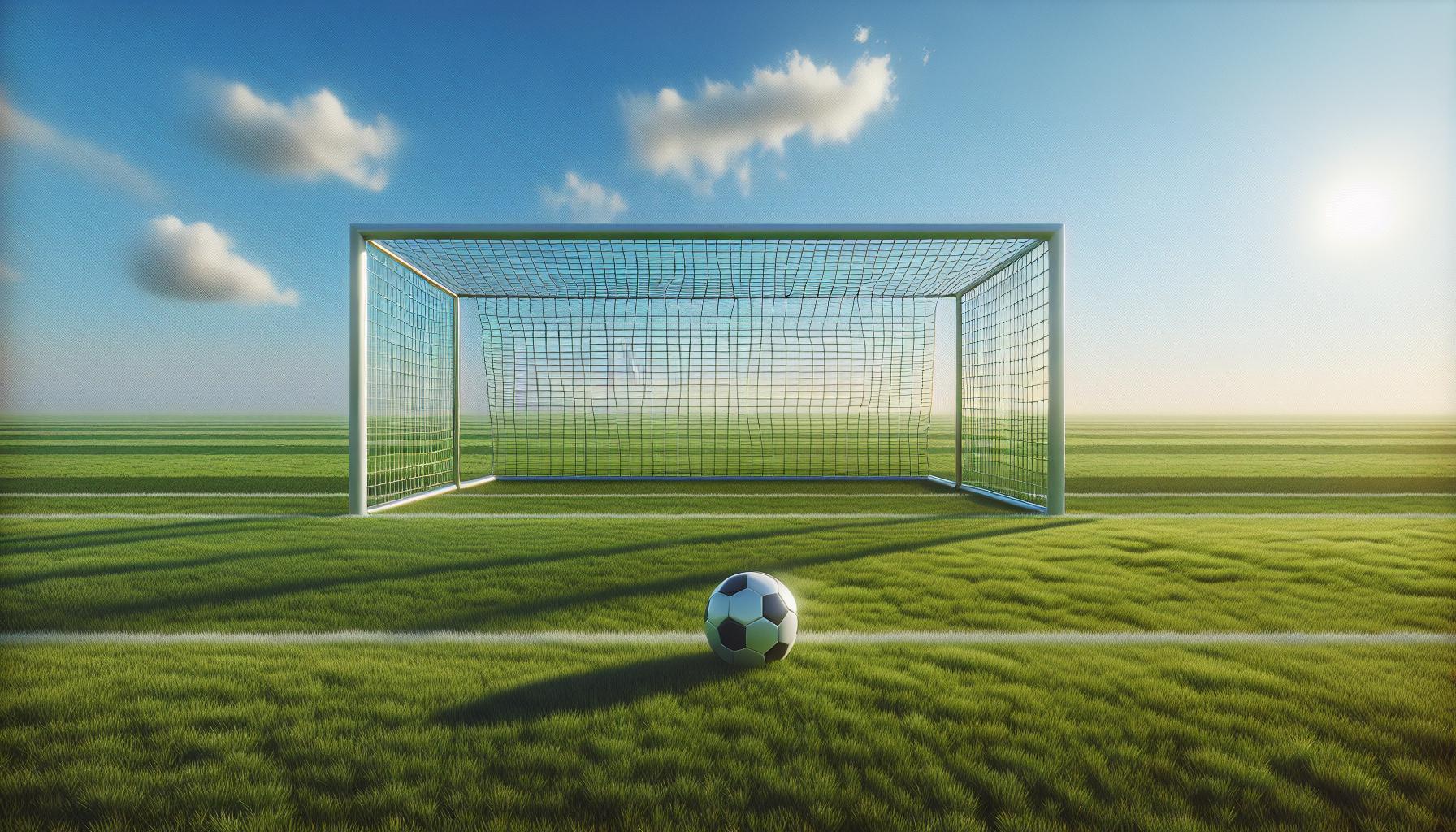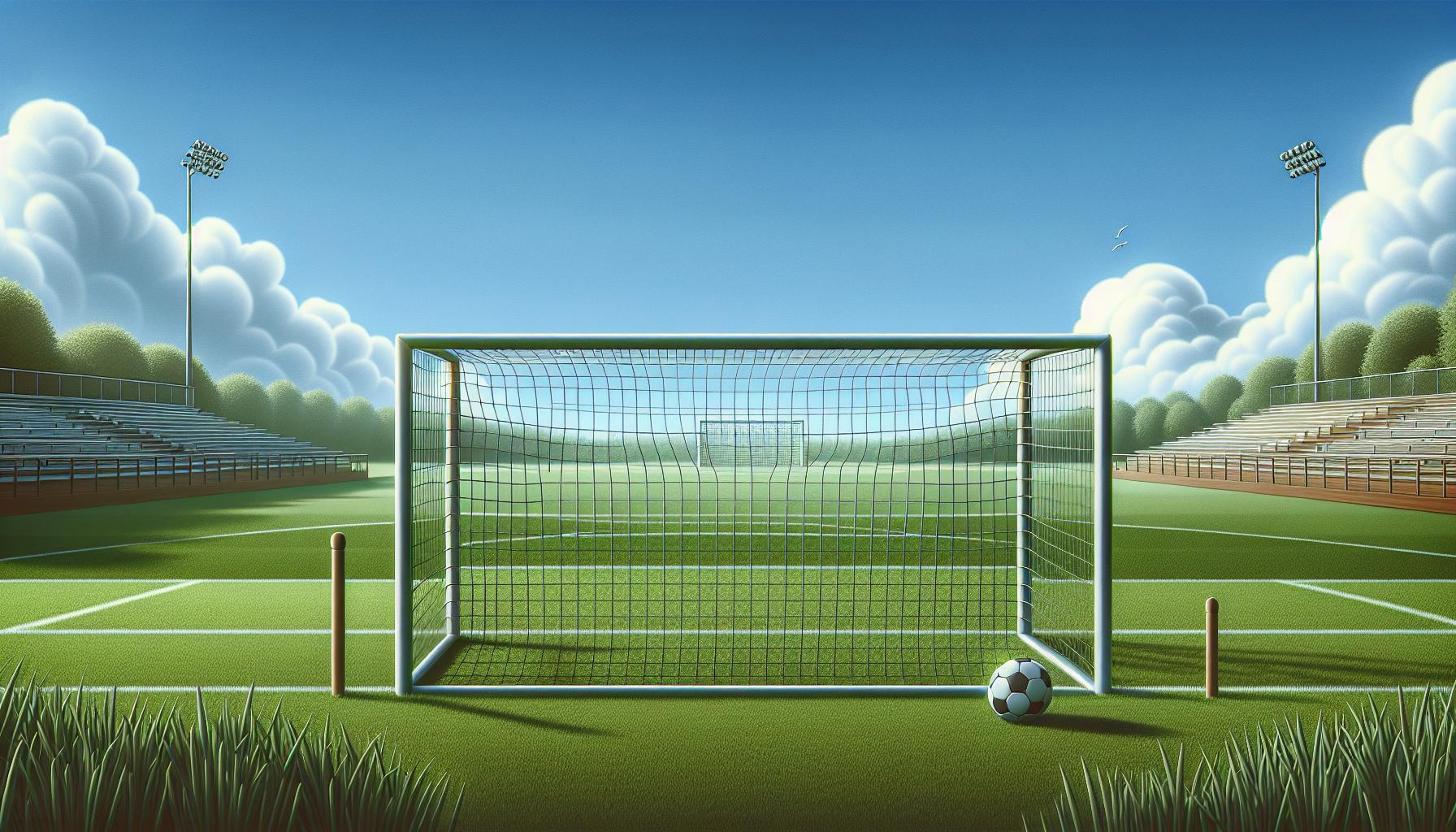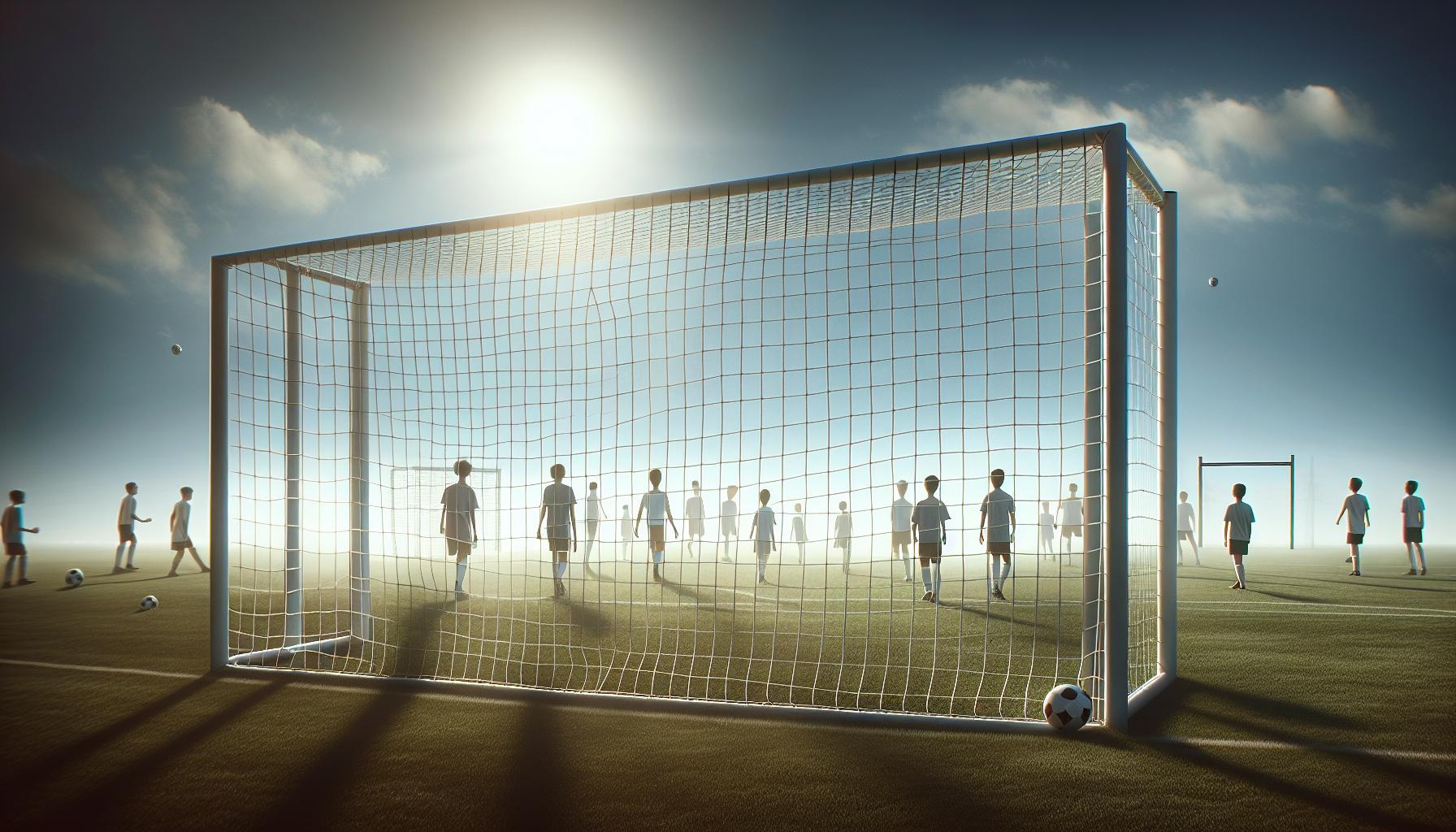When it comes to high school soccer, the size of the goal can significantly impact the game. Understanding the dimensions is crucial for players, coaches, and parents alike. Whether you’re gearing up for practice or getting ready for a big match, knowing the standard goal size can help everyone involved better prepare for the challenges on the field.
High school soccer goals are typically 8 feet tall and 24 feet wide, creating a playing environment that balances skill and strategy. These dimensions are designed to accommodate the growing talents of young athletes while ensuring the game remains competitive. In this article, I’ll dive deeper into why these measurements matter and how they influence gameplay.
Key Takeaways
- High school soccer goals officially measure 8 feet in height and 24 feet in width, as regulated by the National Federation of State High School Associations (NFHS).
- These dimensions impact gameplay significantly, influencing shooting techniques, goalkeeper positioning, and overall player strategy.
- Understanding the correct goal size enhances player skills, encouraging accurate shots and defensive tactics necessary for competitive play.
- Variations in goal sizes may exist among different leagues, particularly in youth soccer, where smaller goals are often used to facilitate skill development.
- Familiarity with the standard dimensions helps coaches and players devise effective training methods and game strategies, ensuring consistency across competitions.
- Misconceptions about historical goal sizes and trends highlight the importance of staying informed on current standards and practices in high school soccer.
Overview of High School Soccer Goal Size
High school soccer goals measure 8 feet in height and 24 feet in width. These dimensions align with regulations set by governing bodies like the National Federation of State High School Associations (NFHS). Understanding these measurements plays a crucial role in gameplay, impacting shooting angles and goalkeeper strategies.
The height of 8 feet allows for a range of shots, including lower drives and high lobs. Players develop techniques tailored to these goal dimensions, influencing training methods. The width of 24 feet requires goalkeepers to effectively cover their area, enhancing their skills in positioning and reaction time.
These standard goal sizes also facilitate consistency across different high school competitions. Coaches utilize this information to devise game strategies, ensuring players are well-prepared for various match scenarios. Familiarity with the dimensions helps players anticipate shots and improve their scoring opportunities. Additionally, knowing the goal size aids in selecting appropriate goalkeeping equipment, such as gloves and padding, further enhancing performance on the field.
Official Regulations

Understanding official regulations is crucial for everyone involved in high school soccer, from players to coaches. Complying with standard dimensions ensures consistency and fair play.
Dimensions for High School Soccer Goals
High school soccer goals measure 8 feet in height and 24 feet in width. These dimensions are established by the National Federation of State High School Associations (NFHS). The height allows players to execute a variety of shooting techniques, fostering skill development. The width challenges goalkeepers, requiring advanced positioning and quick reactions. Following these specifications facilitates effective practice and competitive gameplay.
Variances in Different Leagues
Several leagues may adopt different goal sizes based on specific requirements. For instance, some youth leagues utilize smaller goals, often measuring 6.5 feet in height and 18.5 feet in width. Certain competitive leagues may also standardize alterations based on age groups or skill levels. Adhering to regional variations aids coaches and players in preparing adequately for their respective competitions.
Importance of Correct Goal Size

Understanding the correct goal size significantly impacts player performance and overall game dynamics. The right dimensions provide a foundation for effective training and competitive play.
Impact on Player Development
Correct goal size influences player skill development. An 8-foot by 24-foot goal encourages precise shots and strategic approaches. Players enhance their aim and decision-making skills, improving their ability to score. Goalkeepers develop crucial techniques for blocking and positioning. As they face a larger target, they learn to anticipate shots better, fostering confidence and resilience.
Influence on Game Play
Goal size affects gameplay strategies and flow. A standard high school goal allows for diverse offensive tactics, as players can exploit various angles to score. Defensively, goalkeepers position themselves based on the size of the goal, strengthening their ability to cover more area. The consistency of goal dimensions across different matches and locations provides familiarity, leading to improved game strategies for both teams. Competitive fairness hinges on understanding these measurements, ensuring that all players engage in a balanced and challenging environment.
Common Misconceptions

Several misconceptions exist regarding high school soccer goal sizes. Understanding these myths clarifies the true standards and practices in the sport.
Historical Goal Sizes
Many believe that goal sizes have remained unchanged throughout history. In reality, soccer goals have evolved over the years. Early soccer goals varied significantly in size, often depending on local customs or available materials. It wasn’t until standardized measurements were established in the late 19th century that a consistent goal size emerged. The modern high school goal size of 8 feet high and 24 feet wide aligns with guidelines set by organizations like the NFHS, ensuring uniformity across competitions.
Current Trends in Soccer Goals
Some assume that all soccer goals at high school level are identical, ignoring the influence of regional preferences and youth leagues. Current trends show a growing adoption of smaller goals in youth soccer to accommodate player development. Smaller dimensions, such as 6.5 feet high and 18.5 feet wide, support skill-building among younger players. These adaptations promote effective training experiences while maintaining a strong foundation for competitive play in higher age divisions. Understanding the variations helps players and coaches prepare for diverse scenarios in games and practices.
Conclusion
Understanding high school soccer goal sizes is vital for everyone involved in the game. The standard dimensions of 8 feet tall and 24 feet wide not only shape player techniques but also influence coaching strategies and game dynamics.
By familiarizing ourselves with these measurements we can enhance training sessions and improve overall performance on the field. Whether you’re a player aiming to refine your skills or a coach developing effective tactics, knowing the goal size lays the groundwork for success.
As the sport continues to evolve so too does the conversation around goal dimensions. Staying informed about these standards ensures a fair and competitive environment for all athletes.

